quinta-feira, 13 de dezembro de 2012
"Resonant Chamber" - Animusic.com
sábado, 8 de dezembro de 2012
Steve McCurry´s
2013 Pirelli Calendar – The Cal™
Being selected to shoot the 2013 Pirelli Calendar was a great honor, and the
beauty of Rio made it the perfect backdrop.

I wanted to photograph a mix of everyday people combined with a very special group of women
known not only for their talent and beauty, but also for their charitable work and
contributions to their communities.

Rio’s varied landscapes of ocean, mountains and jungle, combined with a dynamic urban
culture, made it a wonderful location to shoot the calendar.
 Adriana Lima
Adriana Lima
Adriana is currently working with Bill Clinton’s global initiative in Haiti.
The aim of the Clinton initiative is to help support and develop
the local Haitian economy.
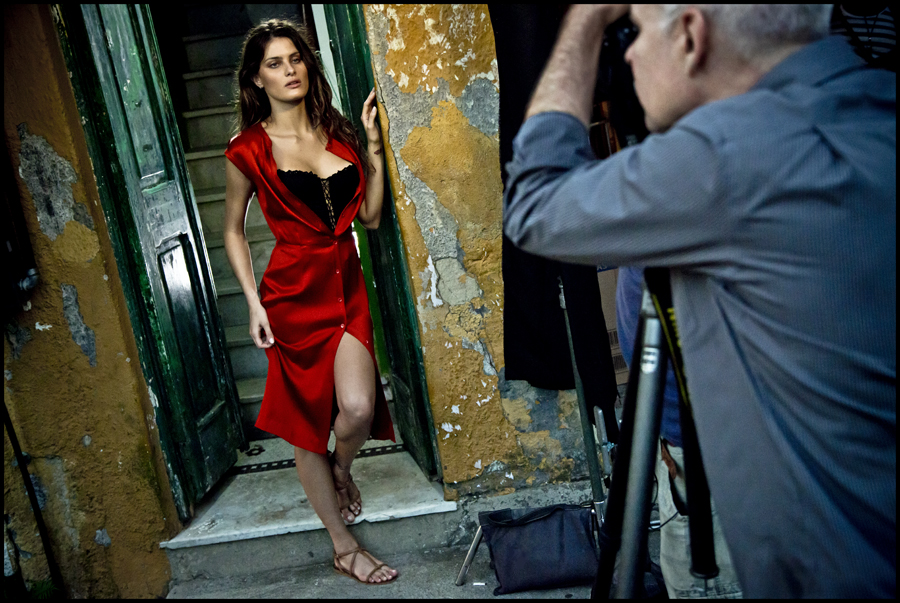 Isabelli Fontana
Isabelli Fontana
Isabeli is currently the Brazilian Ambassador for an organization
that works in collaboration with Save the Children.

Summer Rayne Oakes
A true ‘eco-optimist’, her environmental activism has been widely acknowledged and honored by
Vanity Fair, CnBC, outside magazine and many others.
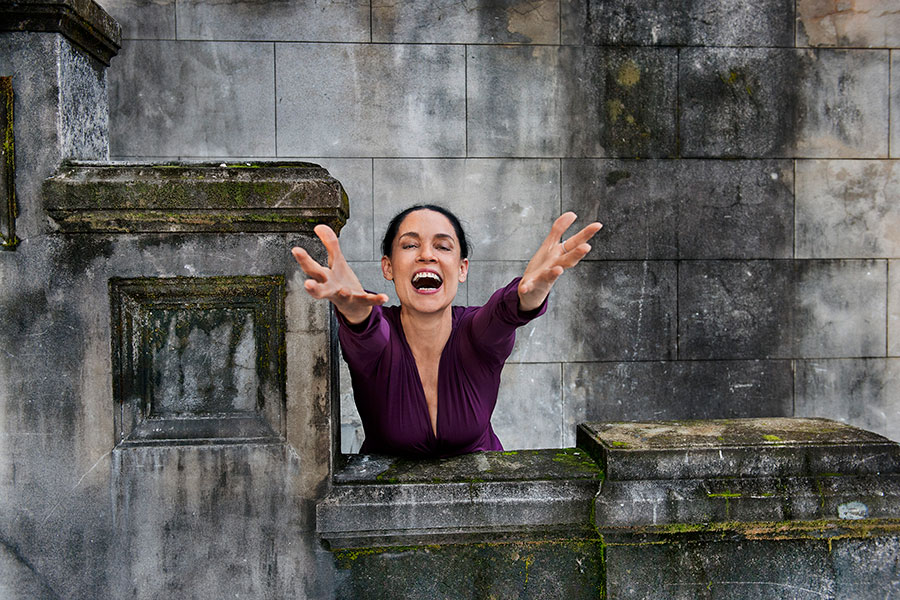 Sonia Braga
Sonia Braga
Sonia Braga is a tireless advocate of childrens’ rights, especially their rights to a
proper education.
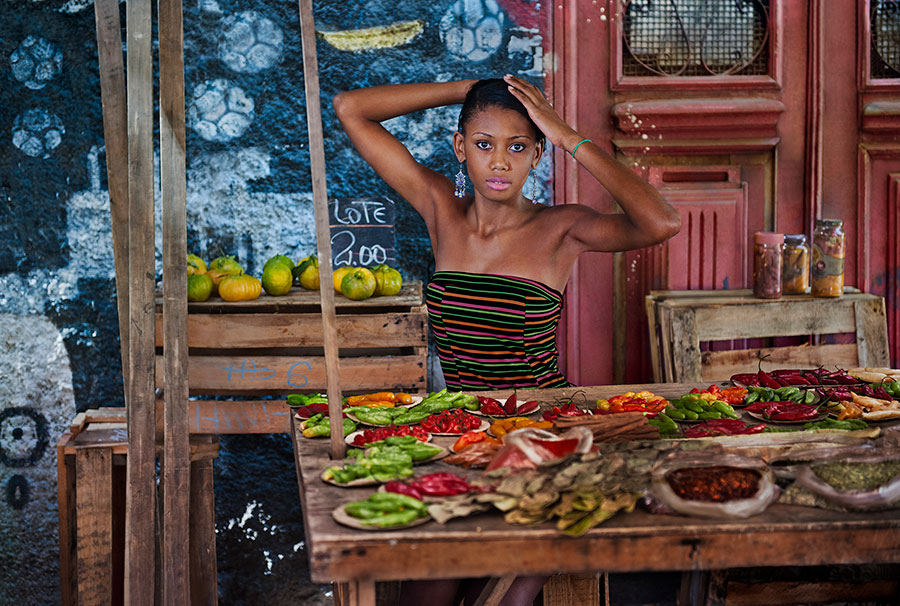
Rio’s people are every bit as amazing as the spectacular landscapes; I was inspired by their
hospitality, warmth and generosity.

I enjoy photographing wall art all over the world; the spirit of Rio came
alive through the images and words on the walls.
segunda-feira, 26 de novembro de 2012
Caio Fernando de Abreu
Caio Fernando Loureiro de Abreu
(Santiago, 12 de setembro de 1948-RS — Porto Alegre, 25 de fevereiro de 1996-RS)
Foi um jornalista e escritor brasileiro.
Apontado como um dos expoentes de sua geração, sua obra, escrita num estilo econômico e bem pessoal, fala de sexo, medo, morte e, principalmente, de angustiante solidão. Apresenta uma visão dramática do mundo moderno e é considerado um "fotógrafo da fragmentação contemporânea".
Cursou Letras e Artes Cênicas na Universidade Federal do Rio Grande do Sul, mas abandonou ambos para escrever para revistas de entretenimento, como Nova, Manchete, Veja e Pop. Em 1968, foi perseguido pelo DOPS, e acabou se refugiando no sítio da escritora Hilda Hilst, em Campinas.
No início dos anos 70, exilou-se por um ano na Europa, passando por países como Inglaterra, Suécia, França, Países Baixos e Espanha.
Em 1983, mudou-se de Porto Alegre para o Rio de Janeiro e, em 1985, para São Paulo.
Voltou à França em 1994 e retornou no mesmo ano, ao descobrir-se portador do vírus HIV.
Faleceu dois anos depois, em Porto Alegre, onde voltara a viver novamente com seus pais e dedicando-se a tarefas como jardinagem.
domingo, 25 de novembro de 2012
Três Gargantas – China
Três Gargantas – China
A maior usina hidrelétrica do mundo
A maior usina hidrelétrica do mundo é a mundialmente famosa Barragem das Três Gargantas, construída no rio Yang-tsé, o maior rio da China.
A construção da Usina das Três Gargantas foi iniciada em 1993. Até fins de 2004, 4 turbinas entraram em funcionamento.
Em 2009, com 26 turbinas instaladas, a capacidade concebida da barragem passou a ser de 18.200 megawatts, ultrapassando a potência de Itaipu.
Diversas empresas brasileiras de consultoria participaram do projeto, tendo em vista a vasta experiência do Brasil com as grandes usinas de Itaipu e Tucuruí, dentre outras. Empresas brasileiras também participaram das obras civis.
Foi aplicado um rígido controle de qualidade, para garantir que a obra não tenha nenhum risco potencial na sua futura operação.
A obra das Três Gargantas tem como funções a prevenção de enchentes, a geração de energia e facilitar o transporte fluvial, por isso ela desempenha um papel importante no desenvolvimento socio-econômico da China.
Alguns dados da usina.
Capacidade = 22 500MW
Altura da barragem = 181m
Extensão da barragem = 2309m (só concreto)
Período de construção = 1994 – 2006
Localização = Ychang, Hubei, China
Turbinas: 32 (6 subterrâneas)
Reservatório:Extensão: 600 km
Quando a água está no máximo de 175 metros acima do nível do mar, a reserva de água da barragem tem 600 quilómetros de comprimento e uma largura média de 1,1 km.
Quando a água está a essa altura, a reserva contém cerca de 39 km3 de água. A área superficial da reserva nesse estado é de 1045 km2.
A construção da Barragem das Três Gargantas implicou o realojamento de 1.300.000 pessoas em três fases (1997, 2003 e 2009).
O custo estimado deste ambicioso projeto é de 22,5 biliões de dólares.
sábado, 17 de novembro de 2012
Mensagem Temporária Utilizada para Detecção do Tema (ebabcd77-b583-4ec3-bf6b-270e52b3e346 - 3bfe001a-32de-4114-a6b4-4005b770f6d7)
É uma mensagem temporária que não foi eliminada. Elimine-a manualmente. (088094df-9d1e-41bb-b721-ed4a6ae210e8 - 3bfe001a-32de-4114-a6b4-4005b770f6d7)
Mensagem Temporária Utilizada para Detecção do Tema (237b3204-b810-4fea-b636-f65f839ce4ad - 3bfe001a-32de-4114-a6b4-4005b770f6d7)
É uma mensagem temporária que não foi eliminada. Elimine-a manualmente. (423277ec-5949-4703-a9eb-d9fe4a880241 - 3bfe001a-32de-4114-a6b4-4005b770f6d7)
segunda-feira, 5 de novembro de 2012
Cuba Linda–Lost city
sábado, 3 de novembro de 2012
BrianSeter–Route 66
terça-feira, 23 de outubro de 2012
Google acusado de abuso de monopólio
A Comissão Federal do Comércio nos EUA está a investigar a Google por alegados abusos de monopólio. Os críticos dizem que a Google controla cerca de 70% de todas as pesquisas na internet assim como a publicidade que aparece em simultâneo.
A Comissão Federal de Comércio está também a verificar se o Google está a exercer ainda mais poder sobre o setor móvel através do controle do sistema Android que é usado em cerca de dois terços dos smartphones.
Está também em discussão o facto do Google promover os seus próprios serviços incluindo viagens, restauração e vídeos do YouTube nos seus resultados de pesquisa.
“São práticas para subir os preços e reduzir a concorrência,” disse Ben Hammer, porta-voz do Fairsearch.org.
Outra preocupação para os críticos da empresa é a forma como a empresa limita como os anunciantes podem gerir os anúncios com o Google e os seus concorrentes.
Os problemas da Google não estão limitados a Washington. A empresa também está a enfrentar uma batalha com o governo francês sobre quem deve pagar por conteúdo de notícias.
A empresa californiana ameaçou excluir notícias francesas dos seus resultados de pesquisa se Paris adotar uma lei a obrigar os motores de pesquisa a pagar pelo conteúdo. Essa lei ao exigir o pagamento para a exibição de links para o conteúdo de notícias, ameaçaria a essência do motor de pesquisa da internet.
A Google fez frente ao governo francês e alertou para o redirecionamento que faz por mês de 4 bilhões de visitas para as páginas de internet dos meios de comunicação franceses.
Mas o benefício obtido pelo tráfego direcionado pelo Google é reduzido uma vez que os leitores se recusam a pagar quando têm acesso gratuito às notícias na internet.
Em agosto, o governo alemão aprovou um projeto de lei que força os motores de busca a pagarem comissões para terem acesso às páginas de internet de notícias alemãs.
Texto escrito de acordo com o novo acordo ortográfico.
Relacionados
- Google permite agora pesquisar desenhando com os dedos
- Google Nexus Tablet – será que vem aí um novo Tablet Android do Google?
- Dê as boas-vindas ao ‘Google’ da pornografia
- Google disponibilizou uma aplicação para aceder ao e-mail sem Internet
- Governo Francês pretende cobrar taxa ao Google por cada artigo lido na Internet
domingo, 21 de outubro de 2012
"Fazer amor é coisa séria demais...
"Fazer amor é coisa séria demais...
Não basta um corpo e outro corpo, misturados num desejo insosso, desses que dão feito fome trivial, nascida da gula descuidada, aplacada sem zelo, sem composturas, sem respeito, atendendo exclusivamente a voracidade do apetite. Fazer amor é percorrer as trilhas da alma, uma alma tateando a outra, desvendando véus, descobrindo profundezas, penetrando nos escondidos, sem pressa, com delicadeza... Porque alma tem tessitura de cristal, deve ser tocada nas levezas, apalpada com amaciamentos... Até que o corpo descubra cada uma de suas funções. Quando a descoberta acontece, é que o ato de amor começa. As mãos deslizam sobre as curvas, como se tocando nuvens, a boca vai acordando e retirando gostos, provando os sabores, bebendo a seiva que jorra das nascentes escorrendo em dons, é o côncavo e o convexo em amorosa conjunção. Fazer amor é ressurreição. É nascer de novo: no abraço que aperta sem sufocamentos, no beijo que cala a sede gritante, na escalada dos degraus celestiais que levam ao gozo. Vale chorar, vale gemer, vale gritar... porque aí já se chegou ao paraíso e qualquer som há de sair melódico e afinado, seja grave, agudo, pianinho... Há de ser sempre o acorde faltante quando amantes iniciam o milagre do encontro. Corpos se ajustaram, almas se matizaram... Fez-se o êxtase! É o instante do amor, da paz... É a escritura da serenidade, sabedoria! E os amantes em assunção, pisam eternidades."
Texto atribuído a um Frei do Colégio Santo Agostinho*
*Arte de Nerdrum Odd* - pintor norueguês...
quarta-feira, 17 de outubro de 2012
POESIA - Rui Knopfli
IDEIA DO POEMA
Fluyída, indecisa, volátil,
inconcreta, a ideia não
se submete facilmente
ao cerco insidioso
da palavra.
Elusiva
e ambígua a cada
instância se lhe furta,
presa de um discreto pudor.
A palavra é, porém,
audaciosa, pertinaz, envolvente.
Persegue-a e espreita-a,
faz-lhe longas esperas
e sai-lhe ao caminho
a horas inesperadas, em lugares
incertos.
Cativa-a
e perturba-a lentamente,
subverte-lhe a vontade,
exalta-lhe os sentidos
e, amorosamente,
nela penetra, desfigurando-a.
Da ideia já nada,
ou quase, sobra.
Senão o poema.
Rui Knopfli
domingo, 14 de outubro de 2012
Uma conversa amiga
— Uma conversa amiga;
— Ouvir boa música, sentado no chão, com a cabeça na suave dobra do sofá (Blues, Rock and Roll, Jazz, Clássica, Mpb, tanto faz), saboreando um bom queijo (pelo simples prazer de degustar),
---acompanhado de um bom vinho tinto (pelo prazeiroso mas efémero deleite de cheirá-lo e senti-lo, revolvendo-me gostosamente as entranhas).
— Ir ao teatro;
— Estremecer comovido, numa sala de cinema, tanto com o dolbysurround de uma superprodução de Hollywood, quanto comprometer-me com a explosiva loucura do doce retrato de recentes e difíceis ---tempos de guerra na Bósnia, visto pela objectiva de um talentoso Emir Kusturica.
— Escrever, como exigente princípio do salutar exercício que sempre nos fez maiores;
— Passear à beira-mar;
— Entrar pelo mar adentro, à tardinha, num veleiro de sete metros, num desses muitos dias de bonança e ver o sol mergulhar em direcção às cálidas águas do hemisfério sul.
— Ouvir histórias (do faz-de-conta, ou nem tanto);
— Contar histórias (do faz-de-conta mesmo);
— Viajar por esse mundo abaixo à procura do não-sei-onde (Costumo dizer que, se no aeroporto, à chegada, alguém me convidar a dar meia volta para partir novamente, fá-lo-ei com o mais indiscritível e infantil dos regozijos);
—De envolver-me apaixonadamente no enredo de um bom livro, para aprender com quem sempre soube mais do que eu e para me esquecer das voltas em que a vida teima em enredar-nos;
— Fazer amor com a raiva intempestiva que as nossas vontades pedirem ou com a doce volúpia que um suave entardecer aconselha;
— De tudo o resto que me dá prazer, por saber que mais prazer dá a quem ternamente me enlaça.
Detesto:
— Palmadinhas nas costas;
— Comida com muito sal.
Só acredito:
— Em mim, porque me sinto;
— Na amizade de quem sei que é sincero;
— No amor de quem nunca soube que era louco.
sábado, 13 de outubro de 2012
Vera Queiroz
Decidi pintar um poema pra ti,
já que as palavras fogem,
vou caçá-las com um pincel e
prendê-las numa tela.
Há de ficar bonito,
vou usar as cores dos teus olhos,
e a moldura será o teu sorriso.
Vera Queiroz
Dedico te a ti Jorge Pereira

Dave Matthews Band
sexta-feira, 12 de outubro de 2012
segunda-feira, 8 de outubro de 2012
This Photografh is my Proof
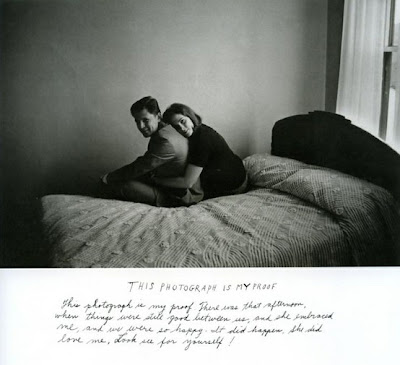
"A "Liberdade do outro estende a minha ao infinito."
"A
"Liberdade do outro estende a minha ao infinito."
"Sou um amante fanático da liberdade, considerando-a como o único espaço onde podem crescer e desenvolver-se a inteligência, a dignidade e a felicidade dos homens; não esta liberdade formal, outorgada e regulamentada pelo Estado, mentira eterna que, em realidade, representa apenas o privilégio de alguns, apoiada na escravidão de todos; (...) só aceito uma única liberdade que possa ser realmente digna desse nome, a liberdade que consiste no pleno desenvolvimento de todas as potencialidades materiais, intelectuais e morais que se encontrem em estado latente em cada um (...)"
Михаил Александрович Бакунин;
Mikhail Aleksandrovitch Bakunin.
..............................................................................................................................
Ich bin ein Mensch, der alle Ethnien, Religionen, sexuellen Vorlieben, Kulturen und Völkern respektiert
Nicht unterscheiden, Farben, lieben Sie den Regenbogen.
Sie wissen nicht, was ein Mann oder eine Frau, oder was das schwache Geschlecht... Ich kenne nur den Menschen.
Ich habe noch nie gesehen, weiß, schwarz, gelb oder rot ... Ich sehe andere Kulturen und andere Völker.
Nicht in Heterosexualität, Bisexualität und Homosexualität glauben ... Ich glaube, nurin der Sexualität.
Ich bin kein Buddhist, noch christlich, noch haben Allah im Herzen ... Aber ich habe Vertrauen!
Tragédia e maravilha no Paquistão
Por vezes é bom regressar ao passado para recordar/ conhecer algo extraordinário, algo que nos marcou ou que nos escapou. Há uma dimensão não imediata em todas as coisas, e é possível encontrá-la até nos maiores desastres naturais, como é o caso. O britânico Russel Watkins relata e ilustra a tragédia e a maravilha encerradas pelas cheias de 2010 no Paquistão.

© UK Department for International Development/Russell Watkins.
Da mesma forma que não só os desastres que afectam os grandes devem ser tomados como relevantes, não só os milagres humanos (religiões desde já à parte!) são dignos de nota, muito pelo contrário. A dualidade natural não é novidade. Beleza e destruição convivem verdadeiramente em porções iguais, pelo que nada há de mais subjectivo que a sua percepção. Para muitos, o que se segue passou ao lado; para outros, é assunto tão pesado que não permite ver mais. Para tantos outros, tudo isto fará sentido.
2010 revelou-se um ano negro na história do Paquistão. A inundação provocada pela maior monção desde 1994, e a segunda maior nos 50 anos que a precederam, fez submergir uma área de quase 800 mil quilómetros quadrados, cerca de um quinto da área total do país. Segundo o governo paquistanês, 20 milhões de pessoas - um décimo da população - distribuídas pela bacia do rio Indo, pelas províncias de Khyber Pakhtunkhwa, Sind, Punjab e Baluchistão, foram directamente afectadas.

© UK Department for International Development/Russell Watkins.

© UK Department for International Development/Russell Watkins.
Com as cheias, que reclamaram quase duas mil vidas, veio a destruição das infraestruturas, das colheitas, e também doenças como a cólera ou a malária, resultado das más condições sanitárias e da falta de água potável. Muitos viriam ainda a perecer, indirectamente, naquele que foi considerado um dos maiores desastres naturais do século XXI, quer pelo seu alcance geográfico - do Planalto Tibetano ao Mar Arábico - quer pela percentagem de população afectada ou pelo impacto económico causado. Combinando o tsunami do Oceano Índico em 2004, o sismo de 2005 que também assolou o Paquistão e o sismo de 2010 no Haiti, não foram atingidas tantas pessoas ou uma área maior, ainda que muitos mais tenham morrido.

© UK Department for International Development/Russell Watkins.

© UK Department for International Development/Russell Watkins.
A ajuda internacional foi prestada a uma escala correspondente à da calamidade; no entanto, o sofrimento das populações de algumas regiões continua até hoje, e a já grande divisão entre classes aumentou muito.
O tema integrou os jornais de todo o mundo, é certo, mas esta informação não causou o impacto de eventos como o 11 de Setembro, e talvez por isso não se imprimiu na memória dos espectadores. A selecção da informação é isso mesmo: uma selecção, tão subjectiva, humana e possível como a escolha das imagens que ilustram estas palavras, imagens estas que pela sua singularidade isolaram do caos da destruição a beleza digna de registo mental, pois a destruição, essa, é banal.

© UK Department for International Development/Russell Watkins.

© UK Department for International Development/Russell Watkins.
Muitos meses passados sobre a cheia inicial de Julho de 2010, e já no período de calmaria depois da tempestade no qual tudo parece parar, reunindo forças para começar a recompor-se, o fotógrafo Russel Watkins, ao serviço do Departamento Britânico para o Desenvolvimento Internacional, encontrou na ainda bastante alagada província de Sind algo surpreendente, um modelo de esperança, à escala. Num fenómeno sem precedentes para os próprios habitantes locais, lentamente regressando ao pouco que a água deixou, surgiu no seio da destruição, em cada árvore, um microescossistema.
Para fugir à rápida subida das águas, que nalgumas zonas ultrapassou os seis metros, milhões de aranhas encontraram nas poucas árvores disponíveis o único porto seguro. A sobrepopulação fez com que, em pouco tempo, estas se assemelhassem a grandes casulos de seda, destacando-se no horizonte da agora inóspita região agrícola. Muito mais do que um quadro de rara beleza, uma estranha beleza nascida do alto contraste com o cenário circundante, as fotografias de Watkins revelam a força com que aqueles pequenos animais se agarraram à vida, e às árvores, ao mesmo tempo que escondem uma ajuda não premeditada às populações da província do sul.

© UK Department for International Development/Russell Watkins.

© UK Department for International Development/Russell Watkins.
A massiva quantidade de água estagnada, que tanto tempo levou a recuar, tornou-se um paraíso para uma outra espécie animal, o mosquito, criando as condições ideais à reprodução deste portador do parasita da malária. Os mosquitos rapidamente se tornaram um dos maiores problemas nas áreas afectadas pelas cheias mas, na província de Sind, as árvores cobertas de teias de aranhas predadoras desempenharam um papel inesperado e fundamental, reduzindo exponencialmente o número de mosquitos e tornando, consequentemente, pontuais os casos de malária.
A beleza destas imagens fê-las correr o mundo numa altura em que da tragédia que silenciosamente contam nem um eco, talvez, se encontrava. No cenário da destruição experienciada pelo Paquistão, um pequeno milagre destacou-se, relembrando a capacidade de adaptação e de regeneração da natureza, sem par, nem entre a raça humana. Mas Russel Watkins frisa que ainda que a natureza tenha inadvertidamente favorecido o Homem, uma outra realidade se lhe seguiria: muitas das já poucas árvores morreriam cobertas de teias, perdendo as populações o abrigo natural das altíssimas temperaturas de Verão... Sempre a dimensão mutável, circular e dual do Universo.

© UK Department for International Development/Russell Watkins.

© UK Department for International Development/Russell Watkins.
domingo, 7 de outubro de 2012
Osho - Why do you like your Rolls Royces so much?
Why do you like your Rolls Royces so much?
I have tried all kinds of cars; and even Rolls Royce has many types and I have tried them too. Their best is the Corniche, but it doesn't suit me. It is a question of my ba
ck. I need a certain kind of chair—I use only this chair. It has been made by my sannyasins exactly to give support to my back, because doctors have said that they cannot do anything more.
Experts from England were called to India. They tried hard, and they said, "It is impossible. You will have to live with it." It was just a coincidence that one of the models of Rolls Royce, Silver Spur, suited me. The driver's seat in that car fits perfectly, gives me no trouble. Naturally, my people love….
They don't belong to me, those cars—nothing belongs to me. I am the poorest man in the whole world, living the richest life possible. My people love me; they want to do something for me. All those cars belong to the commune. They have made them available to me for one hour each day. I don't know which car they are bringing, but one thing is certain, that I can be comfortable only in a Silver Spur. And they love me so much that they are trying to have three hundred and sixty-five Rolls Royces, one for every day. And I say, "Why not? A great idea!"…
They have arranged ninety Rolls Royces, and I know they will be able to manage three hundred and sixty-five. last210
People are very much interested in your Rolls Royces. What do You want to prove with this, so many cars and so much luxury around You?
Why are people concerned? Then certainly they need it; then more Rolls Royces will be here. Until they stop asking me, more and more Rolls Royces are going to be here. Now it has to be seen that it is a challenge: the day nobody asks me about Rolls Royces, they will not be coming.
People's interest in Rolls Royces shows their mind. They are not interested what is happening here. They don't ask about meditation, they don't ask about sannyas, they don't ask about people's life, love, the laughter that happens in this desert. They only ask about Rolls Royces. That means I have touched some painful nerve. And I will go on pressing it till they stop asking.
I am not a worshipper of poverty. That's what those Rolls Royces prove. I respect wealth. Nobody before me had the guts to say it. The pope cannot say that he respects wealth, although he is the wealthiest man on the earth.
I am not a hypocrite. I am the poorest man on the earth. I don't have a single cent with me. But I want to show these people what attracts their mind. If there were no Rolls Royces here, perhaps there would be nothing for the whole world ask about me, about you, about meditation, about initiation into sannyas, about love, about anything. It is for those idiots that I am keeping all those Rolls Royces, because they cannot move their eyes away from those Rolls Royces. And meanwhile I will go on pouring other things in their minds. Without those Rolls Royces they would not have asked a single question.
Those Rolls Royces are doing their work. Every idiot around the world is interested in them. And I want them to be somehow interested—in anything in Rajneeshpuram. Then we will manage about other things.
So tell those people—when anybody asks, tell them that "These Rolls Royces are for you idiots. Otherwise you are not interested in anything." Once they stop asking about Rolls Royces, then I will have to think of something else, whether to have rockets which are going to the moon…. I will have to think of something else. last403
I received a letter from a bishop of Wasco County, who had been for almost five years condemning my Rolls Royces. In every Sunday sermon he was not preaching Jesus Christ, he was preaching me and my Rolls Royces. The day I was leaving he wrote a letter to me, "Now you are leaving, it will be great kindness on your part if you can donate one Rolls Royce to this church." Now, this shows the man….
I informed him, "Would you like all ninety-three, or only one?"
And a letter came, "If you can give all ninety-three, that is just the right thing. You are really great. I'm very sorry that I condemned you for five years. You are a man to be worshiped."
It is a very strange world if you understand people: whatever they are saying shows more about them than it shows about the person they are talking about. pilgr12
Just the other day Anando was showing me one book published against me in Australia by a couple who have been sannyasins for three years and have been in the commune. But just looking at their ideas, it seems they have never seen me. They are saying that they were working, working hard, and with their work I was purchasing Rolls Royces. You can see the absurdity: their work was not bringing any money. Their work was making their own houses to live in, the roads—which were needing money, not producing money. But in their mind—and for all those three years also—they must have been resentful.
Those Rolls Royces were not produced by the commune. They were presents from outside, from all over the world. And I was not their owner—I had given them to the commune. They were commune property, and I have not brought any of them with me; I have left them with the commune. Everything that I had has been left with the commune. I never owned anything. But there must have been the idea that they are earning money, and I am wasting money. That is their resentment.
What money were you earning? In fact you needed money to make houses, to make roads, to make a dam—a dam needed two and a half million dollars to make. You were contributing your labor, but we were not creating money out of it so that I could purchase Rolls Royces, so that I could purchase anything. I have not purchased anything from the money produced by the commune because the commune never produced any money. The commune was absorbing money.
In fact all my royalties, all my books, all their profits were going to the commune. The situation is just the opposite—that I had given everything to the commune. Now, four hundred books in different languages were bringing millions of dollars in royalties, and those royalties were going to the commune.
If I had wanted to purchase Roll Royces, I could have purchased my own Rolls Royces, as many as I wanted, just out of my royalties.
But the resentment, the anger, is blind. In the commune we invested two hundred million dollars. Those sannyasins perhaps think they had brought two hundred million dollars there! Without me and the people who love me around the world, those two hundred million dollars would not have been possible.
sexta-feira, 5 de outubro de 2012
Simply Red Live
berlin hyperlapse
segunda-feira, 1 de outubro de 2012
Avishai Cohen
Sergio Larraín - O Personagem Fatal
Sergio Larraín - O Personagem Fatal
Sergio Larraín foi um dos fotógrafos mais importantes da América Latina, suas fotos nos levam à um Chile que parece ter sido criado pelas palavras de Pablo Neruda, mas se as suas imagens saíram de um livro, sua vida se confunde o tempo todo com a literatura: seduzir a filha de um mafioso, ser um exímio atirador de facas na Paris dos anos 60 e ter uma de suas histórias transformadas no filme Blow up de Antonioni são alguns dos capítulos dessa biografia romanceada.

© Sérgio Larraín, "Copetinera de Valparaíso" (Flickr).
Valparaíso é daquelas cidades imaginárias. Nunca pisei no seu solo, mas sei como andar por suas vielas, conheço a sua geografia acidentada e alguns dos seus desconhecidos habitantes me levam para passear. Como nas narrativas sedutoras que Marco Polo fazia ao imperador mongol Kublai Khan, no livro As Cidades Invisíveis de Ítalo Calvino, é impossível não se apaixonar por Valparaíso ao ver as fotografias de Sergio Larraín.
O fotógrafo que não queria ser engenheiro, deixou a faculdade de Engenharia Florestal para se dedicar ao uso da sua Leica IIIC. Dedicou menos de 20 anos à fotografia, mas foi o suficiente para tornar-se um dos melhores fotógrafos da América Latina e entrar para o staff da agência Magnun por convite de nada mais nada menos que Henri Cartier Bresson.
Larraín nasceu em Santiago no Chile, em 1931. Seu conterrâneo, o escrito Roberto Bolaño, o definiu como “O Personagem Fatal” devido à sua vida cercada de mistérios e histórias que parecem retiradas de livros de aventuras. Entre outras coisas, dizem que a primeira tarefa que recebeu ao começar a trabalhar na Magnum, foi a de fotografar o chefe da máfia siciliana Giuseppe Russo, tarefa quase impossível. Vem daí também a história de que teria, quem sabe para conseguir a tal fotografia, seduzido a filha do mafioso.

© Sérgio Larraín, "Bella en el Lupanar de Valparaíso" (Flickr).

© Sérgio Larraín, "Inocencia de Valparaíso" (Flickr).
Seus trabalhos estamparam capas das mais importantes publicações de sua época: Life, Paris Match e até a brasileira Cruzeiro. Sua lente se voltava, sobretudo, para a pobreza e a miséria. Em Valparaíso, sua Macondo real, o fotógrafo capturou a cidade em todos os seus prismas: a rica boemia noturna, o passeio de desconhecidos pelas ruelas íngremes da cidade, o porto e sua agitação, mas foi com as imagens pungentes de meninos que viviam sob a ponte do rio Mapocho que ele mais se destacou.
Um dos seus trabalhos mais importantes só faz aumentar a aura de mistério que o cerca: o fotolivro El Retangulo em la mano (1963) teve sua edição toda jogada ao lixo depois que o próprio Sergio rasgou 2 das 17 fotos de todos os exemplares. Por isso, encontrar um exemplar da obra é raríssimo.

© Sérgio Larraín, "Los siete espejos de Valparaíso I" (Flickr).

© Sérgio Larraín, "Los siete espejos de Valparaíso II" (Flickr).
Os enigmas pareciam mesmo querer persegui-lo onde quer que fosse. Em uma sessão de fotos que fez nos arredores da catedral de Notre Dame, em Paris, capturou algumas imagens que depois de passarem por inúmeras ampliações revelaram um mistério. Esse enredo lhe parece familiar?
E é familiar à todos aqueles que já leram o conto Las Babas del Diablo, do argentino Julio Cortázar. Na história, o fotógrafo Roberto Michel, um franco-chileno se envolve em um mistério enquanto fotografava em um domingo. A realidade se mistura à dúvida e à ficção, já que ao final fica a cargo do leitor tirar suas próprias conclusões sobre o acontecido.
Para os que não conhecem o conto, o enredo pode lembrar o filme Blow up de Michelangelo Antonioni, que vem da mesma origem, já que foi baseado no conto de Cortázar e consequentemente na fantástica história vivida por Larraín.

© Blow Up.

© David Hemmings em Blow Up.
Com uma vida envolta em névoa como a desse chileno, o final não poderia ser comum. Ainda no final dos anos 60, ele conheceu o boliviano Oscar Ichazo, fundador da Teoria Arica que consiste em uma filosofia que busca o desenvolvimento espiritual e a iluminação do ser humano. Assim, mesmo estando no auge de sua carreira como fotógrafo, Sergio Larraín abandonou as câmeras e se isolou no interior da província de Ovalle, no Chile. E lá viveu longe de todo o glamour anterior e de todo o contato com a mídia até fevereiro deste ano, quando faleceu aos 81 anos.
O fotógrafo que revelou um Chile mítico deixou mais que imagens. Com tantos detalhes insondáveis na sua vida, ele nos deixa na dúvida: existiu mesmo ou foi criado por algum escritor de romances?

© Sérgio Larraín, "Muelles de Valparaíso" (Flickr).

© Sérgio Larraín, "Calles de Valparaíso" (Flickr).

© Sérgio Larraín, "Don Alberto y los niños de Mopocho" (Flickr).
quinta-feira, 27 de setembro de 2012
Anarquias de uma paixão
-
Mais uma vez chego em casa e o teu caos já está instalado. Ainda bem, pois assim posso contemplar tua desordem. É na bagunça sensual de teus vestígios que descubro os segredos dos teus bastidores. Mesmo assim, o núcleo do teu tufão se revela como uma paisagem. Camarim de distrações.
Passo pela porta e teus sapatos, jogados ao revés, cansados de marchar sobre o desejo daqueles que te olharam durante o dia, recepcionam-se como cães desdenhosos. Sobre o sofá, tua bolsa aberta vomita restos de papéis, batom, escova e canetas que me espiam. Adubo de teus segredos.
Na área de serviço, tua lingerie estendida no varal revela a gama de personagens já interpretados por ti. Máscaras sem uso. Meu bordel esvoaçante.
Uma taça untada de vinho foi abandonada por ti sobre a mesa da cozinha. A marca de batom vacila se deve fixar-se ou não. Vitrine de tuas aquarelas.
Pelo caminho que me leva até nosso quarto, livros, revistas com marcações aleatórias de algo que tenha chamado tua atenção mostram que passastes por aqui. Teu casaco abraça minha cadeira onde trabalho. Sei que queres impor tua autoridade até sobre o que é inanimado em mim.

Suspensa sobre a nossa cama, tua meia-calça está prestes a cometer suicídio. O vestido desmaiado ao chão ainda conta com o calor do teu corpo. Brincos, anéis e pulseiras não te algemam mais. Genocídio de pudores.
Quando abro a porta do banheiro, estás nua sob a água quente com um sorriso de chuva para mim. Aquário das minhas vontades. Anarquia de minha vida.
Anarquias de uma paixão
* As obras que ilustram o texto são do artista italiano Pino Daeni (1939-2010)
quarta-feira, 26 de setembro de 2012
King Krimson
segunda-feira, 24 de setembro de 2012
Grateful Dead
sábado, 22 de setembro de 2012
Pablo Neruda-
” Me falta tempo para celebrar teus cabelos.
Um por um devo contá-los e elogiá-los:
outros amantes querem viver com certos olhos,
eu só quero ser teu cabeleireiro.
Na Itália te batizaram de Medusa
pela arrepiada e alta luz de tua cabeleireira.
Eu te chamo de minha travessa emaranhada:
meu coração conhece as portas de teu pelo.
Quanto de extravias em teus próprios cabelos,
não me olvide, lembra que te amo,
não me deixe perdido partir sem tua cabeleireira
pelo mundo sombrio de todos os caminhos
que só tem sombra, de dores transitórias,
até que o sol suba a torre de teus pelos”
-Pablo Neruda-
Carinho da amiga IZA

AMO-TE
"Amo-te
como a planta que não floriu
e tem dentro de si,
escondida, a luz das flores,
e, graças ao teu amor,
vive obscuro em meu corpo
o denso aroma que subiu da terra.
Amo-te sem saber como,
nem quando, nem onde,
amo-te diretamente
sem problemas nem orgulho:
amo-te assim porque não sei amar
de outra maneira
a não ser deste modo
em que nem eu sou nem tu és,
tão perto que a tua mão
no meu peito é minha,
tão perto que os teus olhos
se fecham com meu sono."
(Pablo Neruda)
Com Carinho
Iza
David Bowie at the Beeb
Helena Frontini

Cavaleiro andante
Venha depressa meu principe sorrateiro
Armado de esperanças como escudo.
Não te detenhas ante a densa covardia
Dos liames que aprisionam tua amada
E reverberam num apelo mudo.
Tua presença será bem vinda como o dia
Que põe fim às noites mal amadas.
O amor que trazes na espada destemida
Guarda o valor que sagrou-te cavaleiro
Em busca da donzela prometida.
-Helena Frontini-
Laurie Anderson
sexta-feira, 21 de setembro de 2012
Carole King - You´ve got a friend
Você Tem Um Amigo
Quando você estiver abatida e cheia de problemas e precisar de um pouco de ajuda e carinho.
E nada, nada estivar dando certo,
Feche os teus olhos e pense em mim que logo estarei lá
Para iluminar até mesmo sua noites mais sombrias.
Apenas chame o meu nome, e você sabe que onde eu estiver,
Eu virei correndo para vê-la novamente.
Inverno, Primavera, Verão ou Outono, tudo que você tem que fazer é chamar
E eu estarei lá
Você tem um amigo.
Se o céu acima de ti se tornar negro de cheio de nuvens,
E aquele velho vento do norte começar a soprar,
Mantenha a cabeça junto a ele e chame o meu nome bem alto.Logo tu me ouvirás batendo a tua porta.
Apenas chame o meu nome, e você sabe que onde eu estiver,
Eu virei correndo para vê-la novamente.Inverno, Primavera, Verão ou Outono, tudo que você tem que fazer é chamar
E eu estarei lá, sim, eu vou.
Não é bom que agora tu sabes que você tem umAmigo quando as pessoas são tão frias.
Elas a machucarão, sim, e a deixarão sozinha.
E, tomarão a tua alma se os deixar,
Ah, mas não os deixe.
Apenas chame o meu nome, e você sabe que onde eu estiver,
Eu virei correndo para vê-la novamente.
Inverno, Primavera, Verão ou Outono, tudo que você tem que fazer é chamar
E eu estarei lá, sim, eu vou.Você tem um amigo
Você tem um amigo
Não é bom saber que você tem um amigo?
terça-feira, 18 de setembro de 2012
domingo, 16 de setembro de 2012
Julia Margaret Cameron: collection highlights
Julia Margaret Cameron, 'Annie Philpot', albumen print from wet collodion-on-glass negative, 1864. Museum no. PH.214-1969
Annie Philpot
This simple portrait of Annie Philpot is important in Julia Margaret Cameron's oeuvre: it is inscribed as 'My very first success in photography, January 1964'. Mrs Cameron had received the gift of a camera from her daughter Julia and son-in-law Charles Norman only one month before it was taken. Having begun her experiments in image making 'with no knowledge of the art', she describes her jubilation at producing the picture in her biographical statement Annals of my Glass House (1874):
'I was in a transport of delight. I ran all over the house to search for gifts for the child. I felt as if she entirely had made the picture. I printed, toned, fixed and framed it, and presented it to her father that same day: size 11 by 9 inches. Sweet, sunny haired Annie! No later prize has effaced the memory of this joy.'
Though known as her first successful photograph, the image has pictorial hallmarks that Cameron would continue to use and refine over her 15-year career. The large-scale head-and-shoulders study, with simply composed light and dark tones, stopping short of sharp focus, remained central to her work.
In February 1864, Cameron included the photograph in an album assembled for her friend and mentor the painter G.F. Watts, offering him 'my first success in my mortal but yet divine! art of photography'.
Julia Margaret Cameron, 'The Turtle Doves', albumen print from wet collodion-on-glass negative, 1864. Museum no. PH.241-1982
The Turtle Doves
Julia Margaret Cameron took more than two hundred photographs of children, often casting them as winged angels and saints, or dressing them in costume to make illustrations after well known literary narratives. She also made studies of her young sitters in the same style as her 'Life Size Heads' series begun in 1866. Cameron was a mother, grandmother and aunt. Children were an important part of her life (she and Charles Cameron had six and adopted at least another five) and after her discovery of photography were readily available as models. Laura Gurney Troubridge, Cameron's great-niece who appears in several of her photographs, recalled that
'we never knew what Aunt Julia was going to do next, nor did any one else for the matter of that…once in her clutches, we were perfectly helpless. "Stand there", she shouted. And we stood for hours, if necessary'.
Joanne Lukitsh, a Cameron scholar, has noted that 'While embracing children had appeared before in literature and the visual arts, this opened-mouthed kiss is unusual and astonishingly sensual'. Cameron made another photograph also titled The Turtle Doves(almost identical in composition and also cut to an oval shape). These and other very similarly posed images of embracing children portray the ethereal embodiment of innocence and devotion in love.
Julia Margaret Cameron, 'Christabel', albumen print from wet collodion-on-glass negative, 1866. Museum no. PH.946-1913
Julia Margaret Cameron, 'Beatrice', albumen print from wet collodion-on-glass negative, 1866. Museum no. PH.945-1913
Beatrice
Another print of the same subject was inscribed by Mrs Cameron: Study of the Beatrice Cenci from May Prinsep(the photographer's niece). The true story of the Cenci, which took place in 16th-century Italy, inspired Percy Bysshe Shelley's poetic drama The Cenci (1819).
The debauched Count Cenci conceived an incestuous passion for his daughter Beatrice. The young woman devised, with her step-mother and brother, a desperate plan - hiring assassins to murder the count. Despite the justice of their cause, Beatrice and her helpers were arrested, admitted their guilt and were sentenced to death by the pope. The simple title invites this dramatic reading of the life-size, close-up head.
Christabel
Julia Margaret Cameron took the subject of this photograph from the 1816 poem of the same title by Samuel Taylor Coleridge. It describes a virtuous maiden who is put under a spell by an evil sorceress.
The themes of treachery and loss of innocence, acted out by Cameron's niece Emily Mary (May) Prinsep, contribute to the atmosphere of sensuality and psychological tension. Cameron manipulated the composition to heighten this effect by blurring the monumental head and the space around it.
Cameron wrote of her pioneering method with large-scale, out-of-focus portraiture,
'when focusing and coming to something which, to my eye, was very beautiful, I stopped there instead of screwing on the lens to the more definite focus which all other photographers insist on'.
Julia Margaret Cameron, 'St Agnes', albumen print from wet collodion-on-glass negative, 1864. Museum no. PH.44.772
St Agnes
The photograph St Agnes shows one of Julia Margaret Cameron's housemaids, Mary Hillier, posed to illustrate a poem by John Keats (1795-1821) called St Agnes Eve.
It tells of the evening that virgins dream of their future husbands. Cameron's close friend and neighbour Alfred Tennyson had also written a poem St Agnes Evein which the young girl, or St Agnes, proclaims 'For me the Heavenly Bridegroom waits, To make me pure of sin', indicating a sacred union with Christ.
To suggest a night scene, Cameron printed the photograph dark and added a moon in the background.
Mary Hillier was one of Julia Margaret Cameron's favourite models. In her biographical statement Annals of my Glass House, Cameron wrote that Hillier
'has been one of the most beautiful and constant of my models, and in every manner of form has her face been reproduced, yet never has it been felt that the grace of the fashion of it has perished…The very unusual attributes of her character and complexion of her mind…are the wonder of those whose life is blended with ours as intimate friends of the house'.
Julia Margaret Cameron, 'Temperance', albumen print from wet collodion-on-glass negative, 1864. Museum no. E.1226-2000
Temperance
This photograph is one of a series of nine that Julia Margaret Cameron made in 1864, her first year of photography. The series is entitled The Fruits of the Spirit and each mount bears a title corresponding to the virtues of love, joy, peace, long-suffering, gentleness, goodness, faith, meekness and temperance.
The photographs show a model as a contemplative Madonna. In all but one, she is posed in the manner of the Madonna and Child, with one or two infants. The model was Cameron's housemaid Mary Hillier, and she appeared so frequently and convincingly in the guise of Madonna that she was known in the Freshwater circles as 'Mary Madonna'.
Temperance could almost be read as a Pieta, the pose in which the Madonna holds the dead Christ. There is a resigned sadness and intensity to Hillier's gaze, and the slumped limpness of the body of the child suggests death. Cameron made another version of the photograph in which she printed the negative in reverse.
The series was the first of her photographs to enter a public collection. Cameron presented it to the British Museum in January 1865 and subsequently it transferred to the Victoria and Albert Museum, in 2000.
Julia Margaret Cameron, second version of a study after the Elgin Marbles, albumen print from wet collodion-on-glass negative, 1867. Museum no. E.2745-1990
Study after the Elgin Marbles
Julia Margaret Cameron often experimented with her models in different attitudes and poses. She also set out to create photographs that followed the long-standing tradition of copying work by great artists.The two figures in this image, Mary Hillier and Cyllena Wilson (an orphan adopted by Cameron), imitate figures from the Elgin Marbles.
These famous classical sculptures came originally from the Parthenon and were named after Lord Elgin, who sold them to the British Government in 1816. Displayed in the British Museum were widely copied and a source of inspiration for many artists.
The Elgin Marbles were reproduced by the Arundel Society, which aimed to promote knowledge of art by circulating and exhibiting copies of otherwise unavailable European masterpieces. Cameron's close friend and adviser, the painter George Watts also encouraged artists to study them. Cameron made two different photographs, carefully positioning Wilson and Hillier according to the gestures of the headless sculptures.
In the first study the models turn their heads to each other as though in conversation. In this version, Cameron has them both looking straight ahead, with Wilson facing outwards and Hillier in profile.
Julia Margaret Cameron, 'Call, I follow, I follow, let me die!', carbon print from copy negative, negative 1867, printed later. Museum no. PH.15-1939
Call, I follow, I follow, let me die!
This photograph concentrates upon the head of Cameron's house maid Mary Hillier by using a darkened background and draping the figure in simple dark cloth.
The lack of surrounding detail or context obscures reference to narrative, identity or historical context. We are left to focus on the expression of the sitter. The mood implied is one of melancholy, suffering and abandon. Yet the flowing hair, lightly parted lips and exposed neck also suggest sensuality.
Cameron sometimes called this photograph 'Call, I follow, I follow, let me die!'. She took this title from a line in a poem by Tennyson 'Lancelot and Elaine' from Idylls of the King (1859), in which Elaine is driven mad by her unrequited love for Lancelot.
Before Cameron left England for Ceylon in 1875, she entrusted her negatives to the Autotype Company, who supplied and sold carbon prints of her images. She undertook this in the hope of wider commercial success and, as carbon prints are more permanent than albumen-silver prints, probably for reasons of longevity.
Julia Margaret Cameron, 'Vivien and Merlin', albumen print from wet collodion-on-glass negative, 1874. Museum no. PH.85-1970
Vivien and Merlin
The image relates to the following passage from Merlin and Vivien, the fifth book of Alfred Tennyson's Idylls of the King (1859):
For Merlin overtalk'd and overworn
Had yielded, told her all the charm and slept. And lost to life and use
Then in the moment, she put forth the charm
Of woven paces and of waving hands
And in the hollow oak he lay as dead,
And lost to life and use, and name and fame.
In the photograph Cameron re-creates the moment in which Merlin (played by her husband Charles Hay Cameron) is put under a spell by the sorceress Vivien (Agnes Mangles). Later Mangles wrote that Charles could not stop chuckling during the theatrically posed sitting, thus spoiling many negatives.
Mrs Cameron illustrated Tennyson's Idylls of the King, at the poet's request, for a 12-volume trade edition of his work. It reproduced her large photographs as woodcut copies, much-reduced in size. However, she also published an edition with the original photographic prints, like this one, faced with hand-written extracts from the Idylls printed in facsimile.
Julia Margaret Cameron, 'John Frederick William Herschel', albumen print from wet collodion-on-glass negative, 1867. Museum no. 930-1913
John Frederick William Herschel
Sir John Herschel (1792-1871) was a life-long friend, adviser and correspondent of Julia Margaret Cameron. She made four portraits of him, all from the same sitting at his home Collingwood, at Hawkhurst in Kent.
Herschel was an important astronomer who also contributed to the early development of photography, coining the terms 'positive', 'negative' and even the word 'photography' itself. He developed the chemical recipe for 'hypo', which stops silver salts reacting with light, thereby fixing the image permanently. Herschel introduced Cameron to photography, and on one of the portraits she wrote:
'My great teacher in this art since he used to correspond with me when in India and sent to me all specimens of the advance of the science'.
The opportunity to take Herschel's portrait was a deeply significant moment. In her book Annals of my Glass House (1874) Cameron wrote:
'When I have such men before my camera my whole soul has endeavoured to do its duty towards them in recording faithfully the greatness of the inner as well as the features of the outer man. The photograph thus taken has been almost the embodiment of a prayer. Most devoutly was this feeling present to me when I photographed my illustrious friend, Sir John Herschel. He was to me as a teacher and High Priest. From my earliest girlhood I had loved and honoured him, and it was after a friendship of 31 years duration that the high task of giving his portrait to the nations was allotted to me.'
Cameron's biographer Helmut Gernsheim has written that his was 'probably the most striking face she ever had before her lens, displaying the majesty and energy of genius, softened by age'. To enhance the commercial value of the portrait, Cameron sent Herschel mounts, which he signed for her.
Julia Margaret Cameron, 'Florence Fisher', albumen print from wet collodion-on-glass negative, 1872. Museum no. PH.209-1969
Florence Fisher
Florence Fisher was Julia Margaret Cameron's great niece. Cameron made six studies of her, one of which she titled A Study of St John the Baptist. There is a striking intensity to this portrait, achieved through the large scale, the contrast between light and dark tones, the sitter's direct frontal gaze, delicate skin and white dress, and background out of which she emerges.
Cameron incorporated flowers and foliage into her photographs for symbolic and compositional purposes. Her female sitters often hold lilies and roses or are surrounded, sometimes even physically enveloped, by nature. In 1855 she wrote to Tennyson
'I always think that flowers tell as much of the bounty of God's love as the Firmament shows of His handiwork'.
Paul and Virginia
In this early photograph Cameron evokes the narrative of Jacques Henri Bernardin de Saint Pierre's tragic romance Paul et Virginie (1787). The story, which was popular at the time, tells of the ill fated love of two children (here played by Freddy Gould and Elizabeth Keown) living on Mauritius, an island off the coast of Africa. Their idyllic existence is shattered by separation when Virginia is sent away to be educated. Attempting to return to the island, her boat is ship-wrecked within sight of land and Paul witnesses her drown rather than remove her clothes, which were too heavy for her to swim to safety. Not long afterwards Paul dies of grief.
In her biography From Life, Julia Margaret Cameron and Victorian Photography, Victoria Olsen suggests that the image relates to the passage in which the two are caught in a storm:
'both were laughing heartily at being sheltered together under an umbrella of their own invention. Those two charming faces, placed within the petticoat, swelled by the wind, recalled to my mind the children of Leda, enclosed within the same shell'.
Julia Margaret Cameron, 'Paul and Virginia', albumen print from wet collodion-on-glass negative, 1864. Museum no. PH.45.148
Julia Margaret Cameron, 'Floss and Iolande', albumen print from wet collodion-on-glass negative, 1864. Museum no. PH.44.755
Floss and Iolande
Only three months after the gift of her camera, Cameron made four similar photographs of the same title. One imagines Mrs Cameron striving to pose the children and position the props. Technically too, even at this early stage, there is experimentation: Cameron intervened after developing the negative by retouching the Paul’s feet to make them appear less prominent.
Floss and Iolande (Mary Hillier and Kate Dore) are characters in St Clement's Eve (1862), a play by Julia Margaret Cameron's close friend the author Sir Henry Taylor. While the title of the photograph is drawn from Taylor's play, the image also relates to Cameron's depictions of the Salutation or Visitation. This episode in the New Testament was a favourite subject in Italian painting. It tells of the meeting between the Virgin Mary and her cousin Elizabeth, who would be the mother of John the Baptist.
In Photography: An Independent Art, Mark Haworth-Booth notes that
'here the forms have dissolved into each other. …This is almost a "spirit photograph". Swirls of collodion film on the negative merge ambiguously with swirling draperies.'
Cameron made two studies of the subject. The other, cut to an oval shape, is a sharper and more contrived pose. The embrace is reversed, with Dore kissing Hillier on the cheek.
Julia Margaret Cameron, 'Julia Jackson', albumen print from wet collodion-on-glass negative, 1867. Museum no. PH.206-1969
Julia Jackson
Julia Jackson was Julia Margaret Cameron's niece and goddaughter, later the mother of Virginia Woolf and Vanessa Bell. A renowned beauty who sat for G.F. Watts and Edward Burne-Jones, Jackson was one of Mrs Cameron's favourite and most photographed subjects. She made numerous portraits of Jackson but none are as visually compelling as this profile, where the light cast across her face and neck emphasises her strong classical features. The photograph was taken shortly before Jackson's marriage to Herbert Duckworth. Mrs Cameron did not generally use Jackson to portray religious or literary figures and narratives but rather made heroic studies of her in her own right such as this.
The print has a hair, probably the photographer's, embedded between the print and the original mount in the lower right section of the sheet.
Sappho
Sappho was a female poet in ancient Greece who lived on the island of Lesbos and wrote of romantic love between women. Plato elevated her to the status of 'Muse' and Julia Margaret Cameron's profile portrait, which emphasises the sitter's strong facial features, depicts her as heroic and intelligent. The model was Mary Hillier, one of Cameron's housemaids. She wears a necklace of gold coins and an embroidered jacket. Her costume suggests individuality and creates a visually elaborate pattern, enhancing the simplicity of the top half of the photograph.
Cameron continued to make prints from the negative despite the large crack in the left hand corner of the glass.
Julia Margaret Cameron, 'Sappho', albumen print from wet collodion-on-glass negative, 1865. Museum no. PH.947-1913
Julia Margaret Cameron, 'The Angel at the Sepulchre', albumen print from wet collodion-on-glass negative, 1866. Museum no. PH.936-1913
The Angel at the Sepulchre
This portrait is another of Cameron's images suggesting biblical themes and 'types' rather than reconstructing a specific narrative. The photo is a representation of the angel that guarded Christ's tomb before his resurrection. As Mike Weaver points out in his book Julia Margaret Cameron, 1815-1879, it suggests Mary Magdalene, who was the first to witness the risen Christ.
Cameron noted on the mount that the photograph was a companion picture to Angel of the Tomb, which is also a profile portrait using Mary Hillier as model. In both, light is thrown across the face, with the rest of the figure merging and softening into dark tones. In The Angel at the Sepulchre, Hillier wears a black veil which increases the contrast between light and dark in the image. This contrast is also set off by the lily at the bottom of the composition.
Cameron was proud of an inscription by G.F. Watts - 'very beautiful, none better' - which she lithographed onto the mount of at least one other print of the subject.
Julia Margaret Cameron, 'Alfred Tennyson', albumen print from wet collodion-on-glass negative, 1869. Museum no. PH.932-1913
Julia Margaret Cameron, 'The Whisper of the Muse', albumen print from wet collodion-on-glass negative, 1865. Museum no. PH.44.746
Alfred Tennyson
Alfred Lord Tennyson (1809-1892), the Poet Laureate, was a major source of inspiration for artists, and in particular for Julia Margaret Cameron, who was his neighbour in Freshwater on the Isle of Wight. It was largely through Tennyson's celebrity that Freshwater became well known. It attracted many of the most prominent artists, writers and intellectuals of the time. Coming to visit the great poet, they were then called upon to sit for Mrs Cameron.
She made at least 19 portraits of Tennyson, often depicting him theatrically in a black cloak and cap, with a book to emphasise his intellect and vocation as poet. This, the last portrait that Cameron made of him, is a quiet yet noble likeness of Tennyson. He wears modern dress and the light catching on the folds of draped fabric creates a golden aura behind his head. The focus of the image is sharpest around the poet’s eyes and nose, to suggest his visionary, 'seeing' gaze.
The Whisper of the Muse
The painter G.F.Watts (1817-1904), known to Julia Margaret Cameron as the 'Signor', was acknowledged by the photographer as her chief artistic advisor and one of her closest friends.
In 1861 he donated his 'Hall of Fame' to the National Portrait Gallery. It consisted of over 60 paintings of 'great men of the age' and was a major influence on Cameron's own 'pantheon of famous men'. This series of life-size head studies, including Sir John Herschel, Henry Taylor and Thomas Carlyle, remain among her best known works. It was a major development in modelling the head 'not only from the Life, but to the Life'.
In Whisper of the Muse Cameron transforms Watts into a musician, making him a symbol of the creative artist rather than showing him specifically as a painter or individual. In this version Kate Keown, the young girl on the right of the picture, whispers inspiration. In another version, Watts looks down on the second child, Elizabeth Keown, resting on his arm while Kate Keown watches intently.
Cameron achieves a satisfying circular balance by the positioning of the violin and the two children either side of Watts in the composition. Watts also painted a portrait of Julia Margaret Cameron, held by the National Portrait Gallery in London.
Julia Margaret Cameron, 'Henry Taylor', albumen print from wet collodion-on-glass negative, 1864. Museum no. PH.211-1969
Henry Taylor
The poet Henry Taylor (1800-86) was Cameron's most frequently photographed male subject. She met him when he and his wife moved from India to Kent and became her neighbours. Like her portraits of Tennyson and Watts, many of her photographs of Taylor mark her friendship but also attempt to convey the 'greatness of the inner as well as the features of the outer man'.
This photograph, another of her 'famous men', is typically devoid of the props or extravagant costumes associated with literary and biblical illustrations. There is a gentle introspection to Taylor's downward gaze and a marked stillness of pose in the photograph. Surrounded by darkness, his white hair and long beard are emphasised as the main visual focus of the image. His hands, placed in his lap, create another highlight and serve to ground him in the composition.
As with other of her well known sitters, Cameron had Taylor sign the mounts of her photographs for sale and also had facsimile signatures copied on to mounts.

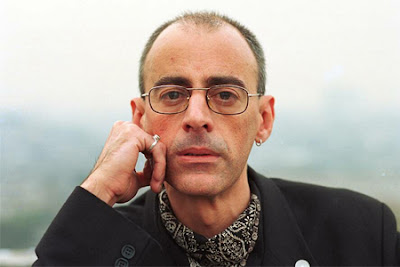







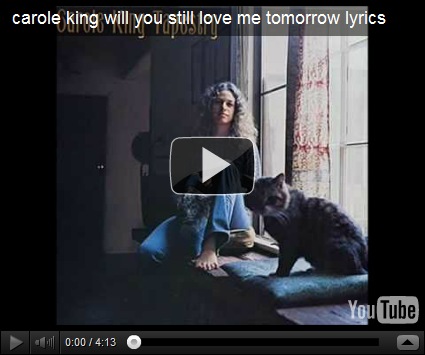




































.jpg)

